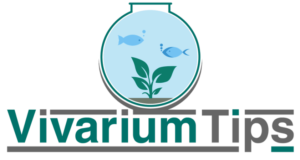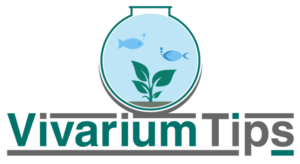Don’t let the name fool you – seed shrimps aren’t actually shrimps. They’re ostracods that can quite invasive to the owners of vivaria.
From reading all the forum posts, they can truly drive a person nuts.
What’s the solution to this?
Well – fortunately for you, this article will show you how to get rid of seed shrimps.
In this guide “How To Get Rid Of Seed Shrimps,” you will learn:
- The brief summary of seed shrimps
- The natural life cycle of seed shrimps
- Ecology of a seed shrimp
- The threats and how you can deal with it
- Ways to respond to an infestation
To navigate to a specific topic, you can check out the table of content right below.
Disclaimer: There may be Amazon affiliate links on VivariumTips.com – When users purchase through an affiliate link, there will be no additional cost to the purchaser. Instead, I will earn a commission from your purchases.
Learning About Seed Shrimps
Seed shrimp are minuscule crustaceans that are mostly deemed as pests and may infest your aquarium if they are introduced by accident.
Since these organisms are tiny, it is until the late stages of infestation that you might spot them swimming around in your fish tank.
It’ll be too late by the time you find out. These tiny beings reproduce at a rapid pace and soon, all you’ll see in your tank would be these guys.
There are differing opinions about seed shrimps but they are predominantly categorized as pests or nuisance. These crustaceans may find their way to your tank with an aquatic plant or old gravel.
Did you know?
The carapace appears like a seed, which is why they’re called seed shrimp.
Once inside, they will soon sweep over everything else. If you’re worried about seed shrimp and want to get rid of them then hang tight and read on.
Getting To Know The Problem – What Are Seed Shrimp?
It is important to understand a pest before strategizing against it. Here is a brief rundown of all the quintessential information about seed shrimp:
Not Actually Shrimps
Though they are commonly referred to as seed shrimp, among other vernacular terms, these crustaceans are not shrimps.
Far from it.
They are much smaller and visibly different from shrimps and prawns. They come in a variety of colors and belong to several related species.
What they really are:
They all are collectively called as Ostracoda, the taxonomic term for the group as a whole.
General Information
They range from 0.1 mm to 0.5 cm long in size, are visible by the naked eye but require magnification apparatus for close inspection.
How do you distinguish them?
As seen from a keen eye, they appear like small dark dots swimming and swirling around your tank.
They only have one eye and their bodies are covered by two shells. They have three or more pairs of appendages and are excellent swimmers for crustaceans.
What do they inhabit?
Naturally, they inhabit pools, ponds, and freshwater marshes, hence an aquarium is a catch.
The Natural Life Cycle Of A Seed Shrimp
Seed shrimp produce highly resistant cysts to survive desiccation during dry periods. When rainwater fills up vernal pools, these cysts hatch to release the larvae.
How many larvae can emerge from each cyst?
One larva emerges from each cyst.
As with most all arthropods, larvae must undergo certain molts and changes called “metamorphosis” to convert itself into the final adult stage.
How do they deal with rapid fluctuations in moisture levels?
Since their habitat shows rapid fluctuations in moisture level, seed shrimp have learned to cope with it via two strategies. Not only do they procreate exponentially, but they also hibernate during dry spells.
The latter, however, cannot get them through an entire summer. Seed shrimps inhabiting the lower strata of vernal pools tend to flourish more.
Did you know?
Females also produce clones asexually, through a process called parthenogenesis.
Not only does this give a constant boost to the population but also ensures the availability of females to mate within the population.
What happens when vernal pools dry up?
When these vernal pools begin to dry up, they resort to survival tactics. Using the limited window of opportunity, females produce “cysts.”
These are highly resistant and can last for years. Some of these cysts are destined to hatch the following year while the others may remain dormant for years to come.
The Ecology of Seed Shrimps
Seed shrimp are quite abundant in vernal pools. Mostly, they thrive in the lower strata where water meets the soil. This is where they find their food.
They are filter feeders, meaning that they draw in food particles alongside water but let the water flow out.
They feed on:
- Bacteria
- Protozoa
- Algae
- Minute Detritus Particles
They are in turn eaten by ducks, mallards, egrets, bigger crustaceans, and if inside an aquarium – even by fish.
The Threat Of Seed Shrimps And How To Deal With It?
Here is a step by step guide for exterminating seed shrimp infestation from your fish tank:
Recognizing The Problem
If you have a keen eye then you will notice tiny dots swimming around in the youth tank. They’ll cling on to the walls, some will hang out near the driftwood, while others will try to burrow themselves in the substrate.
Seed Shrimps’ Appearance
These tiny dots will usually be of a dark color, and upon closer inspection, will appear almost spherical.
How Bad Can A Seed Shrimp Infestation Be?
Seed shrimp reproduce very quickly. Sooner than you know, they’ll be all over the swimming space in your tank. Not only are they a nuisance, but they also interfere with the normal functioning of the tank.
What will be the struggle during the process of removal?
The biggest problem is that they are very hard to kill.
They are meant to be as such since they normally live in an inhospitable environment.
- Their eggs especially are very resistant
- They will survive pesticides (not that you should add something like that to the tank), temperatures shocks, and even UV.
- They seem to be indestructible, even setting the CO2 level higher than normal will not affect them.
Responding To The Infestation
As mentioned earlier, the eggs are a strong foe, you must instead invest your efforts on the larvae and adults.
Here are some of the ways you can get rid of seed shrimp, once the infestation has taken root:
Vacuuming
This is a simple technique and especially effective if the infestation is not intense. Simply vacuum out the seed shrimp via an aquarium vacuum.
How often should you vacuum?
Do this regularly, every day until no more seed shrimp are visible.
Be on the lookout though since their cysts can help them rebound.
Biological Control
Guppies, especially young ones, are fond of live food like larvae and adult seed shrimp. They are inexpensive, hardy, and strong persecutors of pests if kept hungry.
Advice: Make sure that your current fish are compatible with guppies before getting some.
Guppies are shoaling fish and hence must be bought in a group of six at least.
Seed Shrimp Traps
Traps for planarians or dedicated seed shrimp traps also work well. They should be used in addition to the two methods cited above.
From VivariumTips,
Seed shrimp can be hard to get rid of. These methods have been tested intensively with varying degrees of success.
The problem is that these crustaceans are very small and hard to kill.
If the problem persists even after such treatments then nothing else can be done but getting a new tank.
Check out these aquarium-related articles that you might find helpful/enjoy:
- What Are Silicates In Water?
- How To Build A Fish Tank Canopy?
- How To Remove Mites In Springtail Culture?
- Using Springtails As Mold Control
- How To Catch Springtails In The Wild?
If you have any questions, feel free to comment below and I’ll be happy to answer it. You can support this blog by articles from VivariumTips with a friend or community! 🙂

